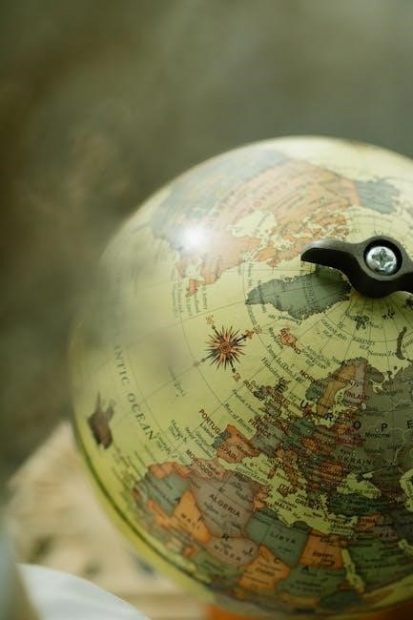Unit 6 Study Guide: Consequences of Industrialization (c․ 1750-1900)
This unit explores the global impact of industrialization, focusing on imperialism, migration, and economic transformations between 1750 and 1900․ It examines how industrialization drove European dominance, leading to colonial expansion, resource extraction, and cultural changes worldwide․ Key themes include the rationales behind imperialism, the role of technology, and the societal shifts caused by mass migration․ The study guide provides essential questions, study tips, and resources to master the content effectively․
Unit 6 examines the global consequences of industrialization from 1750 to 1900, focusing on imperialism, migration, and economic transformations․ This period saw European nations gain economic advantages, leading to colonial expansion and resource extraction․ Key themes include the ideologies justifying imperialism, technological advancements enabling imperialism, and the societal impacts of migration․ The unit also explores how industrialization reshaped global power dynamics, leading to the decline of old empires and the rise of new imperial powers, fundamentally altering societies worldwide․
1․2 Key Themes: Industrialization, Imperialism, and Migration
This unit focuses on three central themes: industrialization, imperialism, and migration․ Industrialization drove economic and technological changes, enabling European dominance․ Imperialism expanded European influence through colonization, often justified by ideologies like Social Darwinism․ Migration, both voluntary and coerced, reshaped societies globally․ These themes intersect to explain how industrialization fueled imperialism and migration, creating profound societal, economic, and political shifts worldwide between 1750 and 1900․
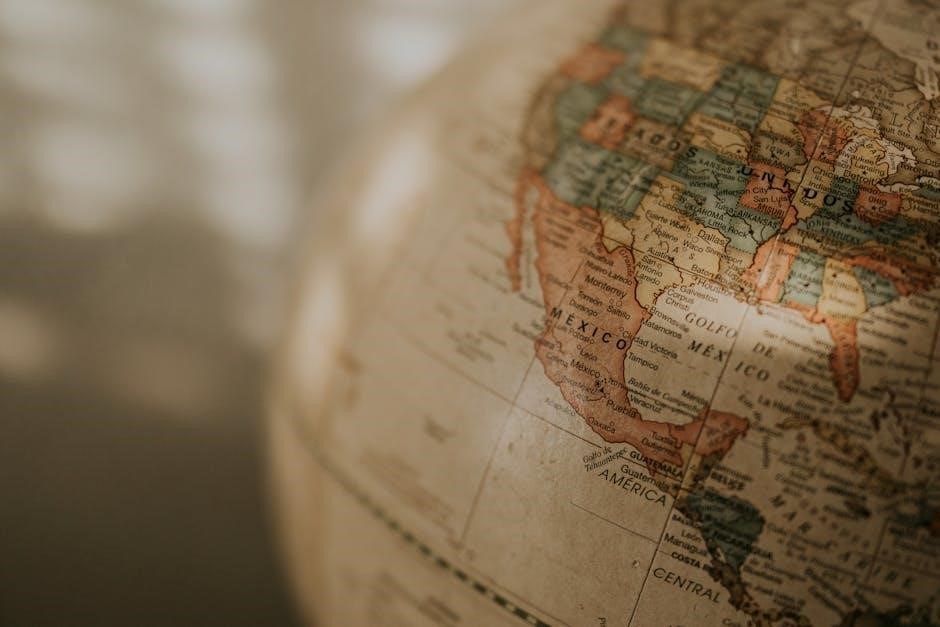
Causes and Consequences of Imperialism
Imperialism arose from economic needs, political ambitions, and ideological beliefs, leading to global colonization․ It reshaped economies, cultures, and societies, fostering both growth and inequality worldwide․
2․1 Economic Rationales for Imperialism
European nations sought colonies to secure raw materials for their industries and markets for manufactured goods․ Colonies provided cheap resources like cotton, rubber, and tea, fueling industrial growth․ Imperial powers exploited local labor to extract these resources, often restructuring economies to serve the metropole․ This economic exploitation created wealth disparities and reinforced global inequalities, with colonies becoming dependent on exporting raw materials while importing finished goods․ Economic imperialism was a cornerstone of colonial policy, driving global trade imbalances and power dynamics․
2․2 Political and Military Factors
Political and military factors played a crucial role in imperialism․ European nations colonized to expand their global influence and secure strategic territories․ Military strength enabled the conquest of colonies, while political rivalries fueled competition among powers․ Diplomacy and treaties were often used to justify expansion, and the establishment of colonies solidified a nation’s status․ The rise of nationalism and the desire for prestige also motivated imperial expansion, as did the need to protect trade routes and ensure security in an increasingly competitive world order․
2․3 Ideological Justifications (Social Darwinism, Civilizing Mission)
Imperialism was justified through ideologies like Social Darwinism, which portrayed colonizers as racially superior, destined to dominate “less fit” societies․ The “civilizing mission” claimed Europeans were obligated to spread Christianity, education, and Western values to “backward” cultures․ These ideas legitimized colonial exploitation, framing it as a moral duty; They also fueled nationalism, reinforcing the belief in the superiority of imperial powers and their right to shape the world order, often ignoring the harm inflicted on indigenous populations and cultures․
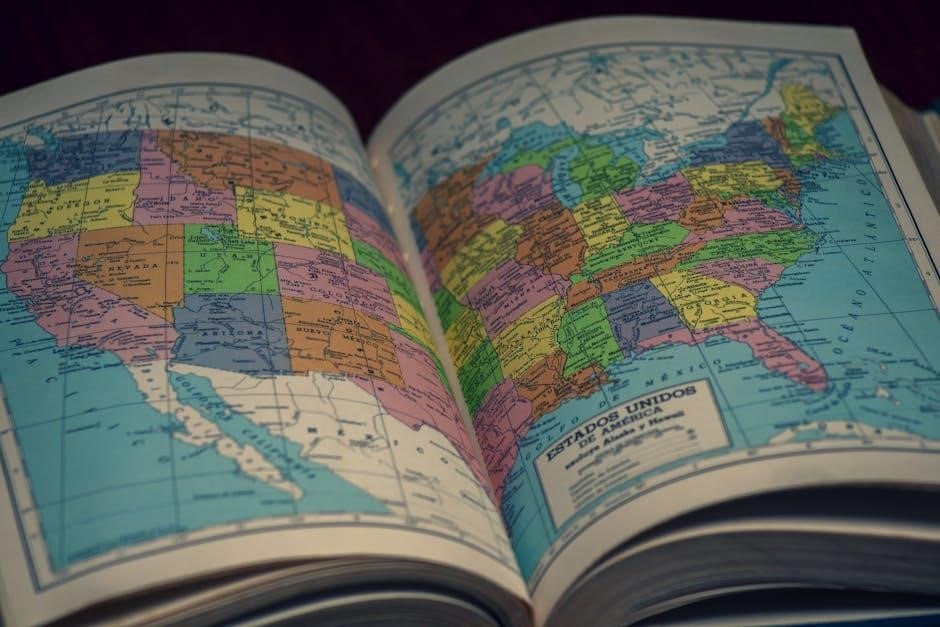
Methods of Imperial Expansion
Methods of imperial expansion included diplomacy, warfare, and technological advancements․ European powers used these strategies to establish control, often transitioning from indirect influence to direct rule․
3․1 Diplomacy and Warfare
Diplomacy and warfare were central to imperial expansion; European powers negotiated treaties to gain territorial control, while military campaigns enforced dominance․ Warfare enabled the seizure of colonies, securing resources and markets․ Diplomatic strategies often masked coercive measures, ensuring compliance from colonized regions․ This dual approach solidified European control, shaping global power dynamics during the 18th to 19th centuries․
3․2 Role of Technology in Imperialism
Technological advancements played a crucial role in facilitating imperialism․ Innovations like steamships, railways, and telegraphs enabled European powers to expand and maintain control over colonies․ These technologies improved communication, transportation of goods, and military mobilization․ Medical breakthroughs, such as quinine for malaria, allowed Europeans to thrive in previously inhospitable regions․ Technology not only enhanced imperial administration but also justified dominance, reinforcing the belief in Western superiority and legitimizing colonial expansion globally․
3․3 Direct vs․ Indirect Control
Imperial powers employed two main methods of control: direct and indirect․ Direct control involved overt governance, where colonial administrators replaced local rulers, imposing European institutions and policies․ Indirect control relied on existing local structures, with imperial powers influencing decisions behind the scenes․ Direct control was often used in regions with strategic importance or resistance, while indirect rule was favored in areas with stable governance․ Both methods aimed to maintain dominance while minimizing resistance, though direct control typically led to greater cultural and political upheaval in colonized regions․

Impact of Imperialism on Colonized Regions
Imperialism reshaped colonized regions through economic exploitation, cultural transformation, and social upheaval․ It disrupted local systems, imposed foreign governance, and often led to resistance and anti-colonial movements․
4․1 Economic Exploitation and Resource Extraction
Colonized regions were exploited for raw materials like rubber, tea, and minerals, which fueled industrial production in Europe․ Colonizers established export-oriented economies, often displacing local industries and agricultural practices․ This extraction enriched European powers while undermining the self-sufficiency of colonized societies․ The focus on resource extraction led to environmental degradation and economic dependency, benefiting colonizers at the expense of local populations․ Industrial goods were then sold back to colonies, perpetuating a cycle of profit for Europeans and underdevelopment for the colonized․
4․2 Cultural and Social Changes
Colonization led to significant cultural and social transformations in colonized regions․ Westernization spread as European languages, religions, and customs were imposed, often suppressing indigenous cultures․ Urbanization increased, and traditional social structures were disrupted․ Education systems introduced by colonizers emphasized Western knowledge, creating a class of elites․ Cultural blending occurred, but local traditions were often marginalized․ Gender roles were also impacted, as women in colonized societies sometimes adopted new roles due to economic and social shifts caused by imperialism․
4․3 Resistance and Anti-Colonial Movements
Colonized peoples resisted imperial rule through various forms of protest and rebellion․ Anti-colonial movements emerged, often inspired by nationalist ideologies and a desire for self-determination․ Leaders in regions like India, Africa, and Southeast Asia organized uprisings, challenging European dominance․ While many rebellions were suppressed, they laid the groundwork for future independence movements․ Resistance also took cultural forms, as indigenous traditions and identities were reaffirmed in response to imposed Western norms․ These movements highlighted the resilience and determination of colonized populations to reclaim their sovereignty and cultural heritage․
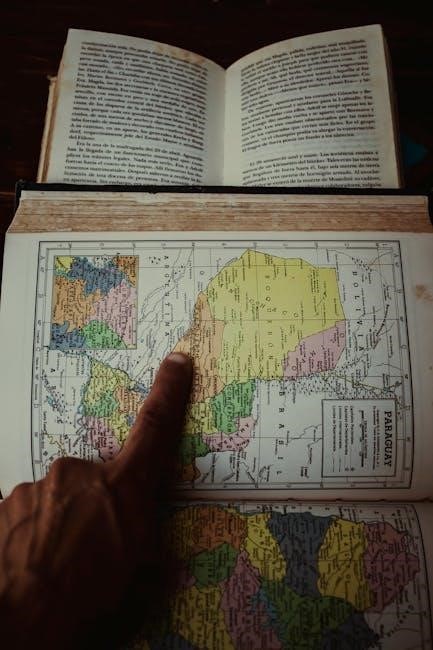
Migration Patterns (1750-1900)
Migration during this period was driven by economic factors, demographic changes, and technological advancements․ Innovations in transportation, such as steamships and railways, facilitated mass movement globally․
5․1 Causes of Migration: Economic and Demographic Factors
Economic factors, such as the search for jobs and better living conditions, drove migration․ Demographic changes, including population growth and urbanization, pressured individuals to move․ Environmental challenges, like agricultural declines due to climate shifts, also spurred migration․ Additionally, the demand for labor in industrializing nations and the expansion of global trade networks created new opportunities․ These economic and demographic pressures pushed millions to relocate, reshaping societies and economies worldwide during this period․
5․2 Role of Transportation Innovations
Transportation innovations, such as steamships and railroads, revolutionized migration patterns․ These advancements made travel faster, safer, and more accessible, enabling mass movement across long distances․ Steam-powered locomotives and ships connected Europe, Asia, and the Americas, facilitating global migration․ Improved infrastructure also supported the relocation of laborers, indentured servants, and settlers․ Such innovations were critical in shaping the scale and speed of migration during this period, linking economies and societies worldwide․
5․3 Coerced Labor Systems (Indentured Servitude, Convict Labor)
Coerced labor systems, such as indentured servitude and convict labor, played a significant role in migration during this period․ Indentured servants agreed to work for a set period in exchange for passage, while convicts were forcibly sent to colonies․ These systems provided cheap labor for colonial economies, supporting plantations, mines, and infrastructure projects․ However, they often subjected workers to harsh conditions, exploitation, and limited rights, highlighting the oppressive nature of these labor practices within the global economy․

Effects of Migration on Societies
Migrations transformed societies by creating diverse communities, fostering cultural exchange, and introducing new labor forces․ They also led to social tensions and required significant societal adjustments;
6․1 Ethnic Enclaves and Societal Adjustments
Migration led to the formation of ethnic enclaves, where migrants preserved their cultural identities while adapting to new environments․ These enclaves facilitated social and economic integration but also created tensions with host societies․ Societal adjustments included changes in labor markets, urbanization, and cultural exchange; Host societies often resisted migrants, leading to policies like immigration regulation․ Ethnic enclaves provided support networks for migrants, aiding their transition․ However, they also highlighted societal divides, reflecting broader challenges of cultural and economic integration during this period of mass migration․
6․2 Gender Roles and Migration
Migration during this period often reinforced traditional gender roles, as men typically migrated for work while women remained behind to manage households․ This led to shifts in societal expectations, with women taking on new responsibilities in the absence of men․ In receiving societies, migrant men often filled labor shortages, while women faced limited opportunities․ Gender roles were both challenged and reinforced through migration, reflecting broader societal norms and economic realities of the time․ This dynamic shaped the experiences of both migrants and their communities․
6․3 Immigration Regulation and Receiving Societies
As migration increased, receiving societies implemented regulations to manage influxes of newcomers․ Laws and quotas restricted certain groups, often targeting ethnic or national origins․ These measures reflected economic concerns, racial biases, and cultural tensions․ Societies also experienced backlash, with native populations sometimes resenting immigrants for competition over jobs and resources․ Governments balanced integration efforts with restrictive policies, shaping the social and economic landscapes of receiving nations․ This period saw the rise of formal immigration controls, influencing global migration patterns and societal dynamics․

Decline of Old Empires
The decline of old empires, such as the Qing Dynasty and the Ottoman Empire, was driven by internal decay and external pressures, leading to their eventual collapse․
7․1 Decline of the Qing Dynasty
The Qing Dynasty’s decline was marked by internal strife, corruption, and external pressures․ The Taiping Rebellion and Opium Wars weakened the empire, while Western imperialism and economic exploitation further destabilized it․ The rise of nationalist movements and the eventual fall of the monarchy in 1912 ended Qing rule, paving the way for modern China’s emergence․
7․2 Decline of the Ottoman Empire
The Ottoman Empire’s decline began with internal instability, corruption, and rising nationalist movements within its territories․ External pressures from European powers and the loss of key regions during the Balkan Wars further weakened it․ World War I marked the final blow, leading to the empire’s dissolution․ The rise of modern Turkey under Mustafa Kemal Atatürk followed, ending the Ottoman legacy and reshaping the Middle East’s political landscape․
7․3 Shift in Global Power Dynamics
The late 19th and early 20th centuries saw a significant shift in global power dynamics․ European nations, the United States, and Japan emerged as dominant forces, replacing older empires like the Qing and Ottoman․ Industrialization and imperialism drove this transition, with Western powers gaining economic and political influence․ Meanwhile, the decline of traditional empires reshaped global hierarchies, leading to a new world order where European and rising non-European powers competed for dominance, setting the stage for the geopolitical tensions of the 20th century․

Rise of New Imperial Powers
During the 18th to 19th centuries, European nations, the United States, and Japan emerged as dominant imperial powers․ European states expanded through colonization in Africa, Asia, and the Pacific, driven by industrialization and economic ambitions․ The U․S․ pursued territorial expansion through Manifest Destiny and overseas acquisitions․ Japan modernized its military and adopted Western practices to assert regional influence․ These rising powers filled the void left by declining empires, reshaping global power dynamics and setting the stage for future geopolitical rivalries․
8․1 European Nations and the United States
European nations and the United States emerged as dominant imperial powers during this period․ Europeans colonized vast territories in Africa, Asia, and the Pacific, driven by industrialization and economic ambitions․ The U․S․ expanded through Manifest Destiny, acquiring territories like Hawaii and the Philippines․ Both European powers and the U․S․ used military force, diplomacy, and economic influence to establish colonies and markets․ This period marked a significant shift in global power dynamics, solidifying their roles as major imperial forces and shaping the modern global order․
8․2 Emergence of Japan as an Imperial Power
Japan’s emergence as an imperial power began with its rapid modernization after the Meiji Restoration in 1868․ The nation industrialized and militarized, adopting Western practices to compete globally․ Japan expanded its influence in East Asia, annexing Taiwan after the Sino-Japanese War (1894-1895) and defeating Russia in 1904-1905, solidifying its status as a major power․ This period marked Japan’s transition from isolation to imperial expansion, mirroring Western imperialism through economic interests and cultural influence in regions like Korea and China․
8․3 Russia’s Expansion and Conquest
Russia’s expansion during the 18th and 19th centuries was driven by economic needs and strategic interests․ It extended into Siberia and Central Asia, absorbing territories for resources and trade routes․ The construction of the Trans-Siberian Railway facilitated imperial control and military presence․ Russia also competed with European powers, engaging in conflicts such as the Crimean War and expanding into the Caucasus․ Additionally, Russia sold Alaska to the United States in 1867, marking a shift in its imperial priorities․ This period solidified Russia’s role as a global imperial power․
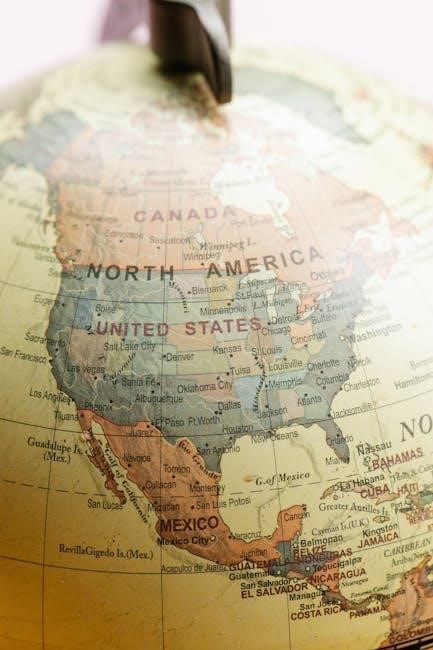
Economic Imperialism and Global Trade
Economic imperialism involved colonizers exploiting resources and establishing export-oriented economies to fuel industrial growth․ Global trade systems favored imperial powers, creating unequal economic relationships with colonies;
9․1 Export-Oriented Economies in Colonies
Colonizers established export-oriented economies in colonies to extract raw materials like cash crops, minerals, and agricultural products․ These resources fueled industrial production in imperial nations․ Colonies were often forced to specialize in producing goods for export, suppressing local industries․ Imperial powers imposed monoculture farming and resource extraction systems, disrupting traditional economies․ The focus on exports prioritized industrial needs over local consumption, creating economic dependency and limiting self-sufficiency in colonized regions․ This system enriched imperial nations while undermining colonial economies and labor systems․
9․2 Industrial Goods and Profit
Industrial nations produced manufactured goods, which were sold to colonies, creating a profitable cycle․ Colonies supplied raw materials to metropolitan factories, which produced finished goods․ These goods were then exported back to colonies, generating significant profits for industrial powers․ This system reinforced economic dependency, as colonies became reliant on imported goods while their economies focused on resource extraction․ The flow of industrial goods solidified the dominance of industrialized nations, furthering their economic and political influence over colonized regions․ Profit-driven industrialization shaped global trade patterns․
9․3 Unequal Economic Relationships
Colonial economies were structured to benefit industrial powers, creating unequal relationships․ Colonies were exploited for raw materials, which fueled industrial production in metropolitan centers․ In return, colonies were forced to rely on imported manufactured goods, limiting their economic autonomy․ This system perpetuated dependency, enriching industrial nations while undermining local industries in colonized regions․ Such economic imbalances reinforced global power dynamics, with industrialized countries maintaining control over trade and resources, solidifying their dominance in the global economy during this period․

Study Tips and Review Strategies
Use flashcards for key terms like Social Darwinism and imperialism․ Engage with practice questions and group discussions to reinforce understanding․ Review lecture notes and chapter readings regularly to master the material effectively․ Utilize online resources like Quizlet and Kahoot for interactive learning․ Focus on understanding causal relationships and global patterns to excel in essays and exams․ Create concept maps to visualize complex connections between ideas and events covered in the unit․ Set a study schedule to ensure consistent progress and retention of information․ Seek clarification on challenging topics early to avoid last-minute cramming․ Teach the material to a study group or friend to deepen your own understanding․ Reflect on past exams and practice essays to identify and address weaknesses․ Stay organized by categorizing notes and study materials thematically․ Prioritize active learning techniques, such as summarizing content in your own words and self-quizzing, over passive reading․ Use mnemonic devices to remember dates, events, and key figures․ Regularly review and update your study guides to keep them relevant and comprehensive․ active participation in class discussions to engage with the material․ seek feedback from teachers on your understanding and performance․ use technology, such as digital flashcards and study apps, to enhance your learning experience․ maintain a balanced study routine to avoid burnout․ collaborate with peers to share resources and insights․ set specific, measurable goals for each study session to stay focused․ review the essential questions for each unit to guide your study sessions․ practice writing essays and responses to sample questions to improve your writing skills․ use graphic organizers to structure your thoughts and ideas visually․ incorporate real-world examples and current events to make the content more relatable․ take regular breaks to maintain concentration and productivity during long study sessions․ stay positive and motivated by celebrating small achievements and progress․ use a variety of study techniques to cater to different learning styles․ review and analyze primary sources and case studies to gain a deeper understanding․ participate in study groups to discuss and debate historical interpretations․ use color-coding and highlighting to make your notes visually engaging and easier to review․ listen to historical podcasts or watch educational videos to supplement your learning․ keep a study journal to track your progress and reflect on what works best for you․ stay hydrated and maintain a healthy lifestyle to support cognitive function and focus․ embrace challenges as opportunities to learn and grow․ seek out additional resources, such as online tutorials and study guides, to reinforce your understanding․ practice time management skills to effectively balance study and other responsibilities․ stay curious and ask questions to deepen your understanding of complex topics․ use technology to create interactive study tools, such as digital timelines and concept maps․ engage in peer teaching to help others and reinforce your own knowledge․ stay updated with the latest developments in historical research and scholarship․ participate in study competitions to test your knowledge and skills․ use music or ambient sounds to create a productive study environment․ take advantage of school resources, such as the library and tutoring services, to support your learning․ stay organized by keeping all study materials in designated folders and files․ use positive reinforcement to stay motivated and confident․ review and practice past exams to familiarize yourself with the test format and content․ engage in active reading by annotating and summarizing texts․ use a planner or calendar to schedule study sessions and deadlines․ stay connected with classmates and teachers through online platforms for collaboration and support․ take care of your mental health by managing stress and maintaining a healthy work-life balance․ use data and statistics to support your arguments and analyses․ participate in simulated debates to practice articulating your thoughts․ use creative writing exercises to explore historical perspectives and narratives․ incorporate physical activity into your study routine to refresh your mind․ use interactive simulations and games to make learning engaging and fun․ stay open to feedback and willing to adjust your study strategies as needed․ use technology to create and share study resources with peers․ engage in collaborative projects to apply historical knowledge to real-world scenarios․ use reflective learning to identify strengths and areas for improvement․ participate in cultural events and exhibitions to gain hands-on experience with historical topics․ use storytelling techniques to make historical events more memorable․ stay disciplined by setting clear goals and sticking to your study plan․ use cognitive training exercises to improve memory and concentration․ engage in discussions with experts or guest speakers to gain new insights․ use multimedia resources, such as videos and podcasts, to diversify your learning․ participate in role-playing activities to explore historical perspectives․ use brainstorming sessions to generate ideas and solutions․ stay accountable by setting deadlines and tracking progress․ use creative problem-solving strategies to tackle complex historical questions․ engage in peer reviews to provide and receive constructive feedback․ use technology to create digital portfolios of your work․ participate in community service projects related to historical themes․ use interdisciplinary approaches to connect history with other subjects․ stay curious by exploring topics beyond the curriculum․ use global perspectives to understand diverse historical experiences․ engage in discussions with international peers to broaden your understanding․ use historical data to predict future trends and patterns․ participate in historical reenactments to experience history firsthand․ use digital archives and databases to access primary sources․ engage in citizen science projects to contribute to historical research․ use 3D modeling and virtual reality to explore historical sites and artifacts․ participate in crowdsourcing projects to transcribe historical documents․ use artificial intelligence tools to analyze historical data and patterns․ engage in hackathons to develop innovative solutions for historical challenges․ use blockchain technology to explore the preservation of historical records․ participate in gamified learning platforms to make study engaging and competitive․ use virtual field trips to explore historical locations remotely․ engage in augmented reality experiences to interact with historical environments․ use machine learning algorithms to identify trends in historical datasets․ participate in data visualization competitions to present historical information creatively․ use cloud computing to collaborate on historical research projects․ engage in cybersecurity training to protect historical digital archives․ use the internet of things to create interactive historical exhibits․ participate in robotics competitions to build models of historical inventions․ use 3D printing to recreate historical artifacts and objects․ engage in drone competitions to explore historical sites from aerial perspectives․ use autonomous vehicles to study historical transportation systems․ participate in renewable energy projects to explore historical energy solutions․ use biotechnology to analyze historical biological samples․ engage in nanotechnology research to study historical materials․ use quantum computing to simulate historical events and processes․ participate in artificial general intelligence discussions to explore historical decision-making․ use brain-computer interfaces to study historical cognitive processes․ engage in neurotechnology research to understand historical human behavior․ use synthetic biology to recreate historical ecosystems․ participate in space exploration projects to study historical astronomical events․ use fusion energy research to explore historical energy developments․ engage in advanced propulsion system design to study historical transportation innovations․ use metamaterials to recreate historical architectural structures․ participate in quantum communication projects to explore historical information transmission․ use holography to visualize historical events and figures․ engage in teleportation research to study historical data transfer methods․ use time travel theories to explore historical causality and events․
10․1 Essential Questions for Unit 6
What were the primary causes and justifications for European imperialism between 1750 and 1900?
How did industrialization drive global migration patterns during this period?
What were the economic and social impacts of imperialism on colonized regions?
How did technological advancements facilitate imperial expansion?
What role did coerced labor systems play in shaping global economies?
How did migration influence gender roles and societal structures?
What were the key factors in the decline of old empires, such as the Qing and Ottoman dynasties?
How did the rise of new imperial powers like the United States and Japan reshape global dynamics?
What were the consequences of economic imperialism and unequal trade relationships?
How did anti-colonial movements emerge and challenge imperial rule?
10․2 Using Flashcards and Quizlet
Flashcards are a powerful tool for memorizing key terms and concepts in Unit 6․ Start by identifying critical terms like Social Darwinism, the Civilizing Mission, and economic imperialism․ Write definitions on the back and quiz yourself regularly․ Use Quizlet to create digital flashcards and access pre-made decks․ Focus on understanding how these concepts connect to broader themes, such as imperialism and migration․ Regular self-testing will help reinforce your knowledge and improve retention for exams․
10․3 Leveraging Lecture Notes and Chapter Readings
Organize your lecture notes and chapter readings to align with the study guide․ Highlight key terms and concepts discussed in class and cross-reference them with textbook chapters․ Pay attention to examples provided in lectures, such as the role of Social Darwinism or the impact of migration patterns․ Use chapter summaries to reinforce your understanding of themes like imperialism and industrialization․ Reviewing these materials regularly will help you identify gaps in your knowledge and prepare effectively for assessments․
